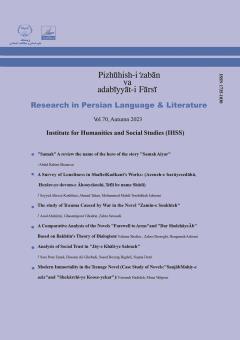The domination of science in the modern era and the effort to have a realistic attitude to all aspects of life have made people today unable to adopt the solutions of the ancients (such as eschatologicalimmortality) to face death. By examining different types of pre-modern immortality, including ancestral, cultural, mystical, mythological, and eschatological, the present article has shown that their common components, i.e., communalness, certainty, and imagination, are almost opposite to the components of modern immortality. The components of modern immortality, which include individuality, uncertainty, memory (as opposed to the imagination), and the concept of eternal nature, are prominent in teenage novels of the 1390s. This research first reviewed the stages and tasks of mourning. While checking and determining the components of pre-modern and modern immortality, it has been showed the correspondence of each stage of mourning with different types of immortality. Then, relying on the novels of "SanjābMahiy-e aziz "and "Shekārchi-ye Koose-ye kar", the issue of death and the role of pre-modern and modern immortality are investigated in advancing the storyline, accepting another's death, and completing the tasks of mourning by the characters. It should be noted that the analysis of samples is based on qualitative content analysis with a descriptive-interpretive approach. The research results show that in both novels, resorting to pre-modern immortality components traps the characters in the initial stages of mourning, i.e. denial, searching, and bargaining. In contrast, the maturity of the characters with the completion of mourning tasks and reaching the stage of improvement and organization through the components of Modern immortality (centered on memory in the novel "SanjābMahiy-e aziz "and eternal nature in the novel "Shekārchi-ye Koose-ye kar" is realized.
Manuscript profile


